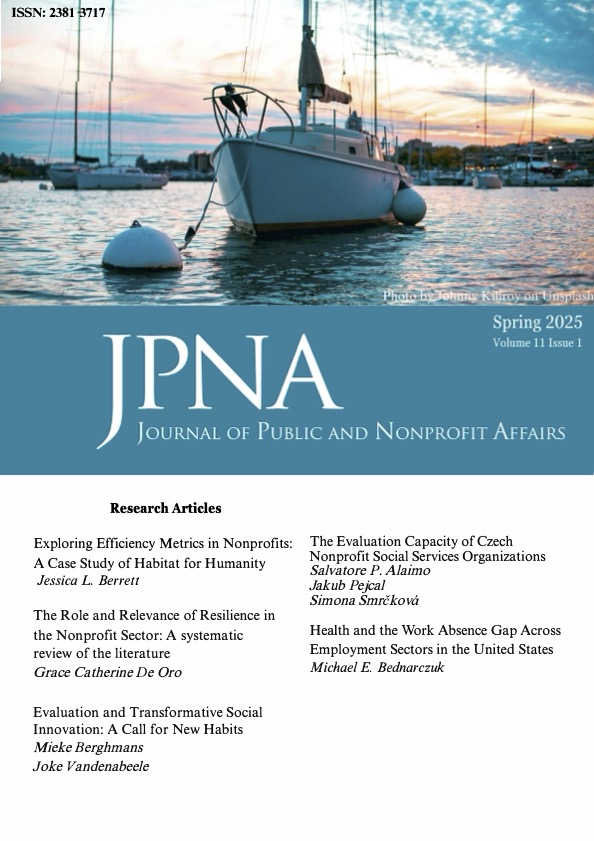The Role and Relevance of Resilience in the Nonprofit Sector: A systematic review of the literature
DOI:
https://doi.org/10.20899/jpna.ysdjay56Keywords:
Resilience, Organizational Resilience, Non-profit OrganizationsAbstract
This review examines previous literature on resilience that focuses on nonprofit organizations. Growing literature examines organizational resilience in the context of nonprofits, however most scholars discuss resilience from a community perspective. This review employs Cochrane-Campbell protocols to establish a research question and keyword search protocols in advance. The main findings include themes in the literature around disturbances to the system, leadership and management trends, and financial resilience. Implications include insights for nonprofit managers when considering short- and long-term recovery plans and how to build a surplus beyond financial means. Ultimately there is a need for a holistic framework to bring together structures, people, and relationships in the discussion of fostering and being resilient. While bounce back is nearly impossible for smaller organizations, which are often in vulnerable financial situations to begin with, they still manage to evolve and survive.
Downloads
Published
Issue
Section
License
Authors who publish with this journal agree to the following terms:
- Authors retain copyright and grant the journal right of first publication with the work simultaneously licensed under a Creative Commons Attribution License that allows others to share the work with an acknowledgment of the work's authorship and initial publication in this journal.
- Authors are able to enter into separate, additional, contractual arrangements for the non-exclusive distribution of the journal's published version of the work (e.g., post it to an institutional repository or publish it in a book), with an acknowledgment of its initial publication in this journal.
- Authors are permitted and encouraged to post their work online (e.g., in institutional repositories or on their website) prior to and during the submission process, as it can lead to productive exchanges, as well as earlier and greater citation of published work (see, The Effect of Open Access).







